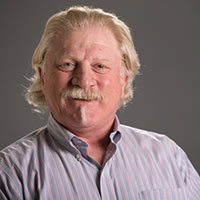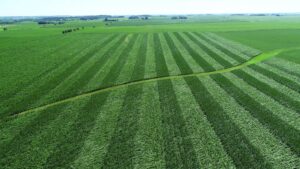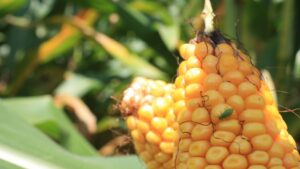Goals and priorities provide direction and help lead to success.
A Note from the Editor
This time of the year, there’s always a great deal of chatter about new year’s resolutions. About 50 percent of Americans make a resolution for the new year; however, psychologist Richard Wiseman, says that 88 percent of those people who set resolutions fail.

A study conducted on the 1979 Harvard MBA program asked students “have you set clear, written goals for the future and made plans to accomplish them?” The result: only 3 percent had written goals and plans, 13 percent had goals but they weren’t in writing, and 84 percent had no goals at all. Ten years later, the same group was interviewed again and the result was remarkable.
The 13 percent who had goals but did not write them down was earning twice the amount of the 84 percent who had no goals. The 3 percent who had written goals were earning on average 10 times as much as the other 97 percent of the class combined.
Why do I share this? As I walked the trade show floor at the American Seed Trade Association’s corn, sorghum and soybean seed research conference, I asked tradeshow exhibitors and attendees what their priorities were for the year ahead. I was surprised at the number of people who couldn’t respond or didn’t have clear, set priorities.
It goes back to that old saying, “if you don’t know where you’re going, any road will get you there.” Ashley Feinstein, founder of Knowing Your Worth, says there are four important steps businesspeople should take in creating clear and measurable goals that lead to success: create a vision, make it measurable, set benchmarks and celebrate success. While these steps might sound simple, it takes commitment and dedication to succeed. — Julie Deering
As the seed industry rounded out 2014 and turns its attention toward 2015, Seed World asks individuals who are in, or supply, the seed and plant breeding industries what their priorities are for the year ahead. Responses range from doing a better job advocating for the industry to increasing penetration into the market. Check out what they plan to focus on and accomplish in the year ahead.
Who: John Schoenecker, chairman
Organization: American Seed Trade Association
For my year as chairman, advocacy has been a key priority. For instance, at our annual meeting in Washington, D.C., in June, we’ll have a day where we “Storm the Hill” to advocate for some of the issues that are important to the industry
There are many priorities in the seed business these days. One thing that’s important to me and to the broader industry is the International Treaty on Plant Genetic Resources for Food and Agriculture. This is an international treaty that has to do with the wild resources that are valuable to plant breeders that are found around the world. There’s a treaty in place. It also intersects with the Convention on Biodiversity, so there’s some issues there that need to be worked out to really get these resources in play and make them available to breeders so we can use those unique genetics they may contain to breed better crops and solve problems.
One of the things that’s part of it and part of the message that we bring to the Hill is that the United States has not ratified the international treaty. We think we should. Its very low risk to ratify the treat, and it would be good to have the United States at the table to advocate for good policies to make the best use of these resources.
The U.S. has one of the largest plant germplasm gene banks in the world, and it’s important that we maintain that leadership, that we be at the table to help make this run right. The terms of the treaty as they stand now are not very friendly to business; they are not very workable. We need to help solve those problems so that there’s a fair system in place that helps to value and maintain these resources because they just don’t exist on their own. They need to be nurtured, kept in safe places and regenerated so that we continue to have those resources available in the long term.
We need to have a system that really works for all the parties involved so that we as industry can go out and bring new products to market, and then help contribute to the maintenance of these germplasm supplies.
Who: Mike McFatrich, director of seed solutions business management
Company: BASF
Product: seed treatments and seed coatings
We released two coatings last year and we are looking at bringing forward a new one in 2015. We have a new seed coatings material that can be used on corn and soybeans that looks extremely promising in terms of its agronomic contribution. We have the opportunity to take a look and understand how that coating interacts with a seed applied fungicide and how that may enhance performance.
We are looking at continually improving the product that we have in the marketplace in the United Stated, called VaultHP for soybean, which is a combination of an inoculant and biofungicide. Again this compliments a traditional seed-applied fungicide, and the product can be applied by the dealer. Those are two areas that are quite interesting.
Ultimately, for me, the ability to say the application of our seed treatment offerings in totality — with coatings, with biologicals, with traditional seed-applied technologies — how can we complement genetics and continue to understand their interaction with genetics, such that we create a similance of a trait? That is very exciting.
“How can we complement genetics and continue to understand [seed-applied technologies] interaction
with genetics, such that we create a similance of a trait?”
— Mike McFatrich
What are the tools that we have to really make a substantially similar impact, not completely, but a similar impact that allows flexibility for the seed company or the distributor or the dealer or the grower? These tools that truly complement the genetic package and optimize performance and help farmers deal with the challenges of diseases and insects and all the pests that we encounter.
Who: Marcus Meadows-Smith, CEO
Company: BioConsortia
Product: consortia of microbials
One of our priorities for 2015 is getting field trials out. This will be the second year of field trials results, so we are moving forward. This year (2014), field trials were corn and wheat. Next year (2015), we expand that to soybean, tomato and leafy vegetables plus some other crops through collaborations.
Already this week (Dec. 8), everyone we’ve met with has said they want to put our products into their field trials to test. We are starting to talk about collaborations with both biotech companies, that are interested in how we can improve their germplasm and their seed lines, and then a chemical company that wants to know how we can improve the chemistry they put on the seed. So it’s really nice that we’re collaborating with both sides.
If we can improve the seed and germplasm, we can also show that we are compatible and can improve the chemistry that’s going onto the seed — seed treatment chemistries. We continue to build out and improve our screening processes. We are getting much more sophisticated in the way we use microbiome data, as well as our plant physiology and plant genetics tools. We’ve recruited people into the company who have expertise in plant physiology and plant genetic/molecular biology so we can actually start to look at what the plant is doing at physiological and genetic levels.
We marry that knowledge with our understanding of the microorganisms that are colonizing. Basically the window that we have into what’s happening between the plants and the microorganisms is much clearer than what we’ve had. One of our priorities is to continue to expand our knowledge in that area.
Who: Rob Tieman, director of sales and marketing
Company: Buckhorn
Product: bulk boxes
The main priority Buckhorn establishes for the markets we serve — for the agriculture and seed industry — are safety. Our products provide safe applications. They provide efficient and effective applications. Then we look for new product ideas, or solution providers, for our end users. The safety aspect is first and foremost, and then coupled with that is efficiency. If people can store and dispense seed faster, then they can accomplish whatever there is to do in less time. So that’s what we concentrate on.
Who: Marco Azzaretti, product marketing manager
Company: Key Technology
Product: Veo green ear sorter
We are working to continue to extend the value that this optical corn ear sorting technology brings to processors. It’s a technology that’s still in the early stages of adoption. We are looking to continue to penetrate more and more husk rooms globally, so in the big seed corn production regions in North America, South America and Europe.
The way we are delivering more value through Veo is by expanding its ability — not just to accurately sort based on husk coverage, but through software development. Veo is very intelligent in identifying and sorting out what processors deem undesirable type of ears in the product stream, such as disease ears, rogue types, ears that have insufficient kernel coverage or moldy ears.
Starting this year, the machine will feature more software intelligence to be even more accurate in the type of selection. We continue to improve machine performance by being able to view the product stream from 360 degrees. There are optical sensors on both sides — top and bottom. We’ve also expanded our product range, which now comprises three sizes of machines to match the three typical husker sizes — 16 lane, 12 lane and eight lane.
With Veo Max, which is a very high capacity machine, customers who prefer not to have a one-to-one ratio after each sorter can consolidate the output to multiple source in the husk room. This allows users to bring corn ears to a single high capacity point — Veo.

















